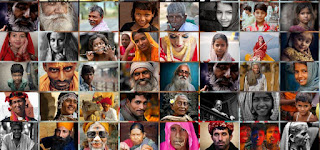INDIA'S ECONOMY
.webp)
India's economy is one of the world's largest and is known for its diversity, rapid growth, and potential. It is a mixed economy, which means it features both private and public sector participation. Here are some key aspects of the economy of India: Economic Size: India is one of the world's largest economies by nominal GDP and is often considered an emerging economic superpower. It has a diverse economic base, with agriculture, manufacturing, and services sectors contributing to its growth. Agriculture: Agriculture remains a crucial sector, employing a large portion of the population. India is a major producer of food grains, fruits, and vegetables, and it faces challenges related to agricultural productivity, water management, and land use. Manufacturing: India's manufacturing sector has shown significant growth, with particular emphasis on industries such as automotive, textiles, pharmaceuticals, and electronics. The "Make in India" initiative is aimed at...





